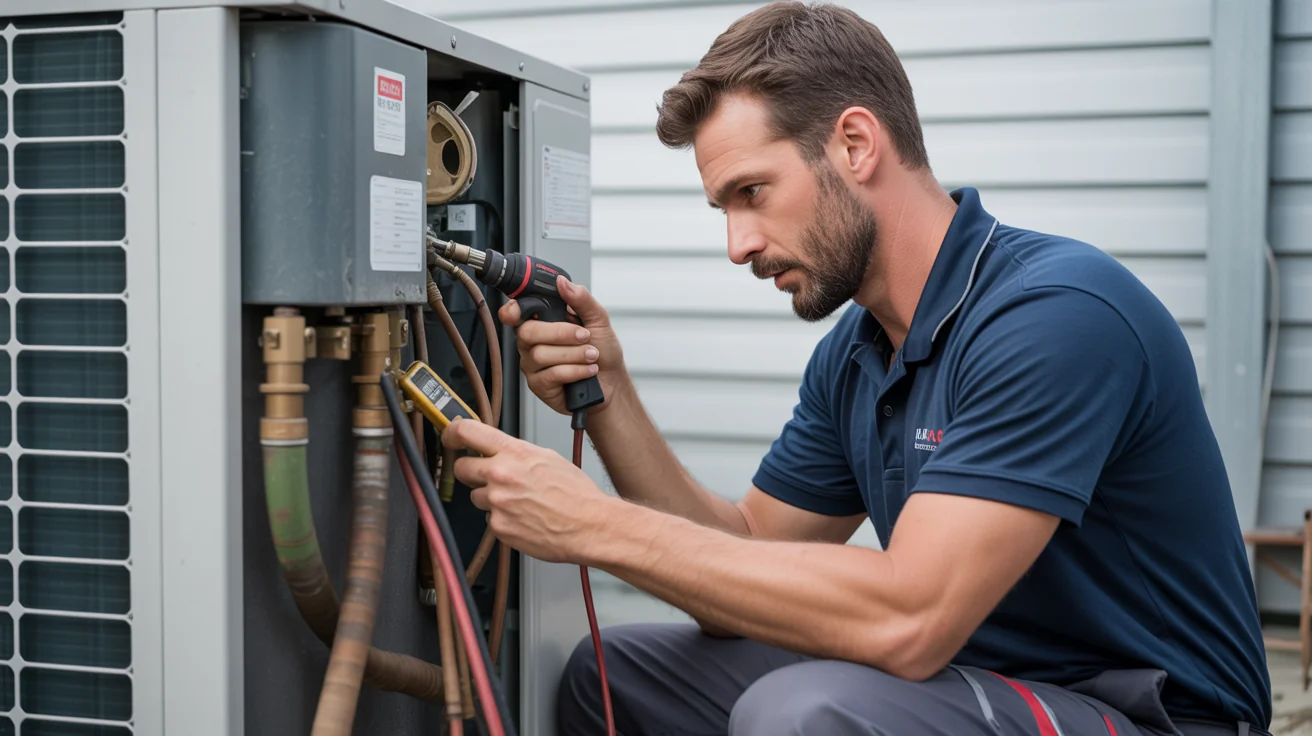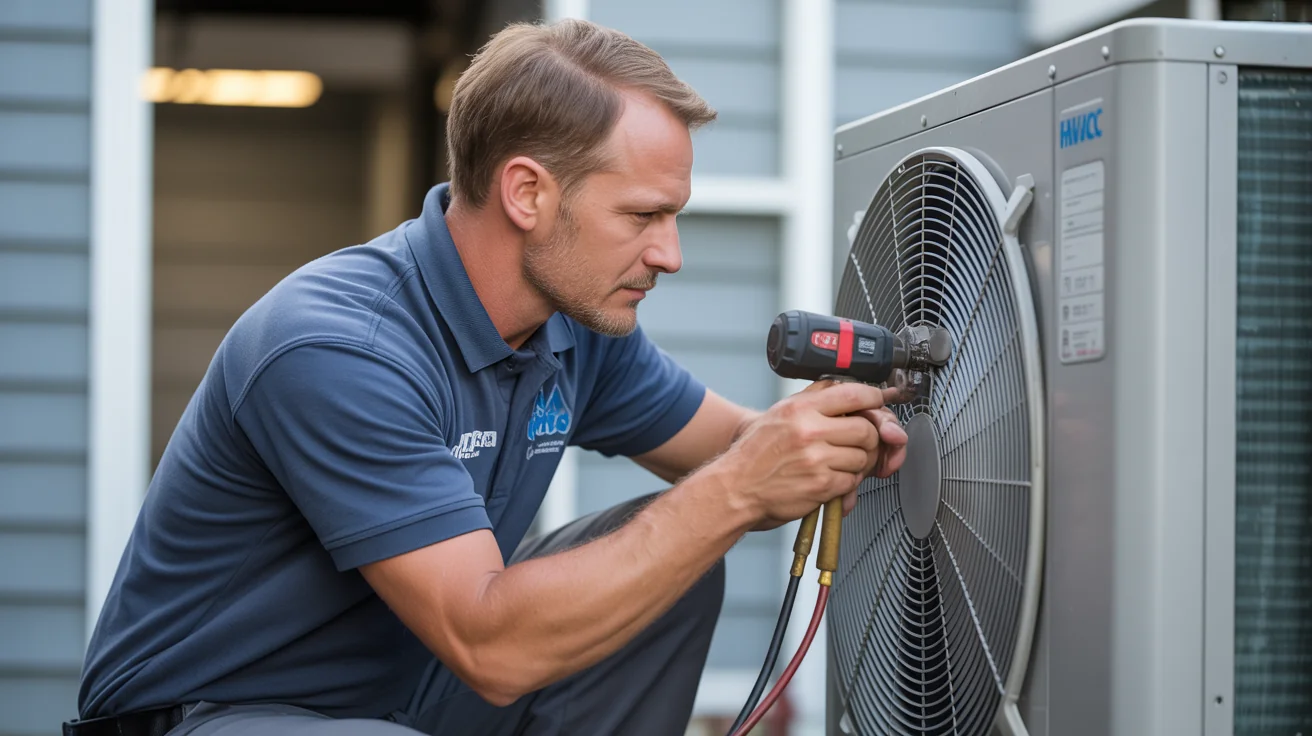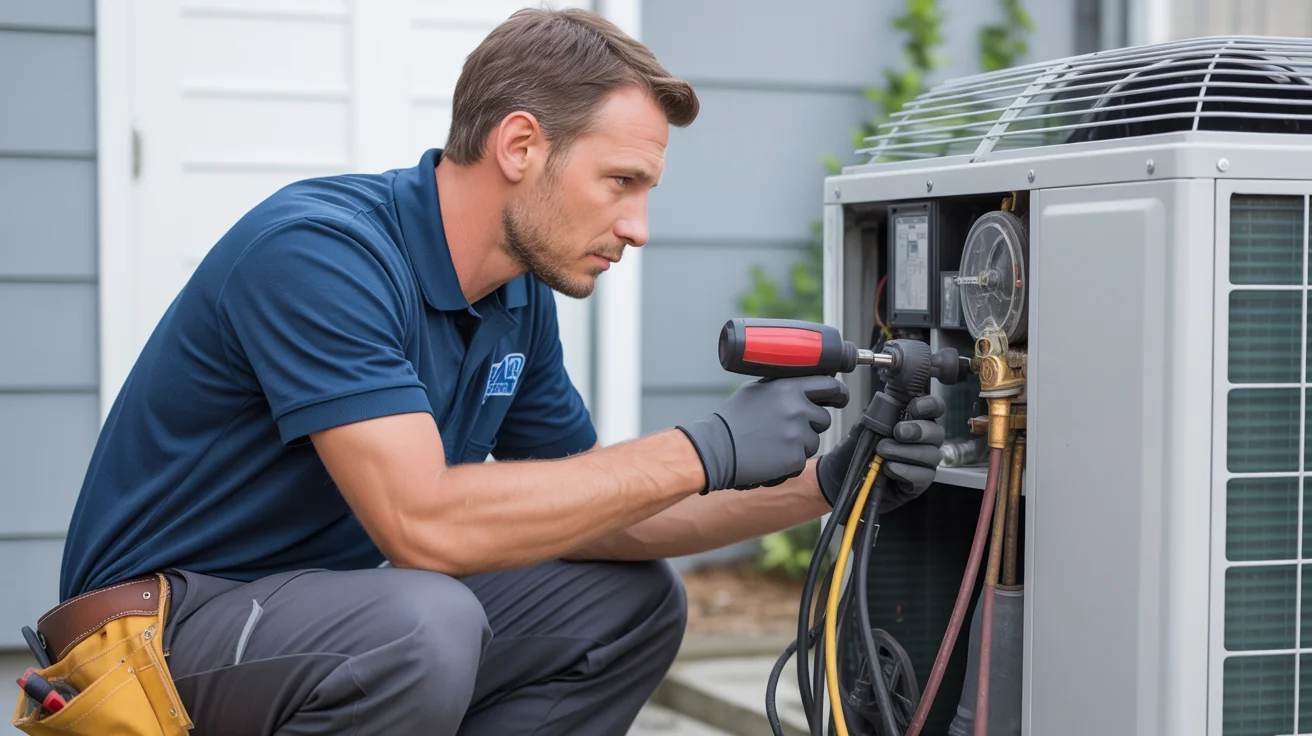How Long Does an AC Last in DFW?
How Long Does an AC Last in DFW? — clear steps, practical detail, and when to call a pro in North Texas.

- The Reality Check Every North Texas Homeowner Needs to Hear
- Why Texas Heat is an AC Killer
- Real AC Lifespans (Based on 15 Years of Service Calls)
- The Math That’ll Save (or Cost) You Thousands
- My “Should I Fix This Thing?” Formula
- What a New AC Actually Costs in DFW (2025 Reality Check)
- Red Flags That Scream “Replace Me Now”
- Questions I Get Asked Every Day
- The Reality Check Every North Texas Homeowner Needs to Hear
- Why Texas Heat is an AC Killer
- Real AC Lifespans (Based on 15 Years of Service Calls)
- The Math That’ll Save (or Cost) You Thousands
- My “Should I Fix This Thing?” Formula
- What a New AC Actually Costs in DFW (2025 Reality Check)
- Red Flags That Scream “Replace Me Now”
- Questions I Get Asked Every Day
The Reality Check Every North Texas Homeowner Needs to Hear
So there I was last July, standing in someone’s driveway in Plano at 3 PM when the temperature was pushing 104°F. The homeowner – let’s call him Mike – was staring at his dead compressor with that deer-in-headlights look I’ve seen a thousand times. You know the one: it’s the exact moment when someone realizes their summer just got really expensive.
“How old is this thing?” I asked, already pretty sure I knew where this was heading.
Mike rubbed the back of his neck and said, “Twelve years. The other guy quoted me $1,800 to fix it, but you’re telling me I need to replace the whole system?”
I have this exact conversation about three times a week during summer, and it never gets easier. Mike’s question is one of those things that keeps me awake at night sometimes, because getting it wrong costs families anywhere from three to six thousand dollars and leaves them sweating through another brutal Texas summer.
Here’s what I’ve learned after 15 years of crawling around North Texas attics: our climate absolutely destroys AC systems faster than anywhere else I’ve worked. Our summers stretch longer, run hotter, and stay more humid than most places in the country. Your AC system runs over 2,000 hours per year here in Texas. Compare that to somewhere like Chicago, where it might run 800 hours if they’re lucky.
Why Texas Heat is an AC Killer
I’ve installed HVAC systems in Arizona, spent two summers working in Florida, and now I’ve been here in North Texas for over a decade. Let me tell you something – nothing, and I mean nothing, compares to what we put these poor AC systems through here.
Your compressor never gets a break. Out in Phoenix, sure, it hits 115°F, but it’s bone dry. Their AC systems actually get to cycle on and off throughout the day. Here in North Texas? It might be “only” 98°F, but with 80% humidity hanging in the air like a wet blanket. Your system runs non-stop from about 10 AM until well after sunset. That constant operation wears out every moving part, every electrical connection, every seal – everything.
Humidity is the silent killer. Most homeowners obsess over temperature readings, but humidity is what really murders AC systems. When your unit has to work twice as hard just to pull moisture out of the air, it’s like making your car engine work in first gear all day long. More work means shorter life, period.
Our electrical grid gets hammered. During those peak summer months, our power grid is getting pushed to its absolute limits. That means voltage fluctuations and power surges that can fry delicate electrical components without warning. I’ve replaced more capacitors and contactors during the month of July than most technicians see in an entire year anywhere else.
Real AC Lifespans (Based on 15 Years of Service Calls)
Forget those rosy manufacturer estimates about 20-year lifespans. After handling thousands of service calls across North Texas, here’s what actually happens to AC systems in our climate:
Standard Central AC: 8-16 years (Not the 20 Years You Were Promised)
You know that friend who brags that they never change their air filter? Their system dies in 8-12 years, and I see these calls every single day. The homeowner who changes their filter “whenever they remember to” – which usually means every 3-6 months – gets about 12-15 years out of their system. That covers most people, honestly. The rare homeowner who actually maintains their system properly? They might squeeze 15-16 years out of it, but that’s about the absolute ceiling in our climate.
Here’s the death sentence for any system: if it’s still running R-22 refrigerant (the old Freon), replace it immediately. Or if you’re looking at repair costs that hit $2,000 or more, you’re just throwing money away.
High-Efficiency Systems: 12-18 years (Worth the Extra Money)
Even the best high-efficiency systems will only last 12-15 years if you neglect them, which is honestly a criminal waste of all that efficiency technology. With basic care – changing filters regularly and getting annual tune-ups – you’re looking at 15-18 years, which makes them a decent investment. I’ve seen maybe two systems that were absolutely babied reach 18-20 years, but don’t count on it.
The Achilles heel of these fancy systems? Those computer controls and variable-speed components usually start acting up around year 12, and they’re not cheap to replace.
Heat Pumps: 8-15 years (Great Until They’re Not)
Heat pumps are fantastic for our North Texas climate, but most people ignore them completely. When that happens, you’re looking at 8-12 years, and the heating mode almost always dies first. With basic maintenance, you can get 10-15 years out of a heat pump. The well-maintained ones can sometimes push 12-17 years, but that requires someone who actually understands how to maintain a heat pump properly – which is rare.
The Math That’ll Save (or Cost) You Thousands
Alright, let’s talk about the money part – the part that makes everyone’s stomach turn. I’ve helped families work through this decision probably 500 times over the years, and here’s what the real numbers look like when you strip away all the sales pitch nonsense.
The Repair Gamble: $1,200-$3,500 (Plus Your Sanity)
So you decide to fix the big expensive problem. Here’s what the repair companies usually don’t mention: your 12-year-old system is going to need another $800-$1,500 repair next summer. Maybe sooner. Your energy bills are running about 40% higher than they would be with a new system because that old technology is just inefficient. You’ve got zero warranty coverage on all the other components that are the same age and probably on their last legs too.
And here’s the kicker – you’re still running a system that’s basically at the end of its useful life. You’re not buying reliability; you’re buying time, and expensive time at that.
The Replacement Investment: $6,000-$12,000 (But You Sleep Better)
Yeah, I’m not going to sugarcoat it – replacement stings upfront. But when you really look at the numbers, you get a 10-year warranty on everything, which means peace of mind. Your energy bills drop by $30-$80 per month immediately because new systems are just way more efficient. No more surprise repair bills for the next 10-plus years, which is huge for budget planning. Plus your home value increases by $4,000-$6,000, so you get some of that money back if you ever sell.
My “Should I Fix This Thing?” Formula
After 15 years of having these exact conversations with homeowners across North Texas, I’ve developed what I call my honest decision framework. No sales pressure, no BS – just the real deal.
If your system is 0-8 years old: Fix it, definitely. Unless the repair estimate is more than half the cost of a new system, which would be weird for something that young. You’ve still got useful life left, and most problems at this age are worth addressing.
If your system is 8-12 years old: Welcome to the gray area, where it gets tricky. If the repair estimate is under $1,500 and your system has been pretty reliable up until now, go ahead and fix it. But if you’ve been calling for repairs multiple times over the past couple of years, that system is trying to tell you something – listen to it and replace it.
If your system is 12+ years old: Replace it. I know that stings to hear, but you’re honestly just throwing good money after bad at that point. I’ve seen too many families spend $2,000 fixing a 13-year-old system only to have something else major fail six months later.
Special case that trumps everything: If your system uses R-22 refrigerant (the old Freon), replace it immediately, regardless of age. That refrigerant has been phased out and now costs $80+ per pound. A simple refrigerant leak that used to be a $300 fix is now an $800-$1,200 nightmare.
What a New AC Actually Costs in DFW (2025 Reality Check)
Let me give you the real numbers for what you’ll actually pay for a new system in North Texas, not the fantasy pricing you see in online ads.
Basic System: $4,500-$7,000
This is your basic, no-frills system that gets the job done. Nothing fancy, no bells and whistles, but it’ll cool your house. Think of it like buying the base model car – it’ll get you from point A to point B reliably.
Good System: $6,500-$9,500
This is honestly the sweet spot for most North Texas homeowners. You get good efficiency that’ll actually save you money on those brutal summer electric bills, a decent warranty that gives you some protection, and reliability that won’t leave you sweating through another emergency repair.
Great System: $8,500-$12,000+
High efficiency, whisper-quiet operation, advanced controls that actually work – this is the luxury level. Worth every penny if you’re planning to stay in your house for 10-plus years and you want the best comfort and efficiency available.
Red Flags That Scream “Replace Me Now”
I see these warning signs on service calls constantly, and if you’ve got more than two of these happening at your house, you need to start shopping for a new system before you get stuck in the middle of July with no AC.
Your AC is Basically Dead Already
If it’s 15-plus years old and you just had to shell out for a major repair, you’re done. Don’t throw good money after bad. If the repair estimate is over $2,000, just walk away – seriously, don’t even think about it. If it’s still using R-22 refrigerant, that stuff now costs more than gold, literally.
When your electric bill has doubled compared to your neighbors with similar-sized houses, that’s your system screaming that it’s dying. If it breaks down when it’s only 85°F outside, that’s not a good sign for surviving a real Texas summer. And if it can’t keep your house below 78°F during our summer heat, you’re basically running an expensive fan.
Start Planning Your Escape
If your system is 10-12 years old and needs constant attention, start researching replacements now while you have time to make a good decision. Any system that’s only 10-12 SEER is basically prehistoric at this point – the efficiency is so bad you’re just burning money.
When some rooms in your house are hot while others are cold, and you know it’s not a ductwork problem, that usually means your system can’t distribute air properly anymore. If your house feels humid even with the AC running, your system has lost the ability to dehumidify effectively. And if you see rust or oil stains around your outside unit, you’ve got refrigerant leaks, which are expensive to fix and often recurring problems.
Questions I Get Asked Every Day
“Should I replace my AC before it dies completely?” Absolutely, yes. Here’s the thing – when your AC dies in July, you’re desperate, and desperate customers pay 20-30% more for whatever system happens to be available that week. Plan ahead and replace it in March or October when you can actually shop around and negotiate.
“Are high-efficiency systems worth the extra money?” In Texas? Without question. Our electric bills during summer are absolutely brutal. A high-efficiency system typically pays for itself in about 6 years just through lower electric bills, and they’re also significantly quieter and more comfortable to live with.
“Can I make my AC last 20 years?” I’ve seen it exactly three times in my 15 years doing this job. All three homeowners were absolutely obsessive about maintenance – changing filters monthly without fail, getting professional tune-ups twice a year, and addressing small problems immediately. It’s technically possible, but don’t bet your budget on it.
“Can I just replace the outside unit?” No, and here’s why that’s a terrible idea. That’s like putting a brand new engine in a car that has 200,000 miles on the transmission. Your indoor coil is just as old as your outdoor unit and will probably fail within a year or two. Do it right the first time and replace the whole system.
“When should I replace my AC?” Fall or early spring, hands down. October through March gets you better prices, better availability, and time to make a good decision. Summer replacements cost more and take longer to schedule because everyone’s in panic mode.
Look, I’m not trying to sell you a new AC if you don’t actually need one. But I’ve been doing this long enough to recognize when someone’s about to waste money trying to keep a dead system alive.
Here’s the deal – if you’re reading this because your AC is acting up, give us a call at (940) 390-5676. I’ll give you straight advice about whether to fix it or replace it. No pressure, no sales pitch, no BS – just honest guidance from someone who’s seen it all.
We serve all of North Texas – Plano, Frisco, McKinney, Allen, and everywhere in between. Licensed, insured, and we actually show up when we say we will.
Need Professional HVAC Service?
Our certified technicians are ready to help with any HVAC needs in North Texas




